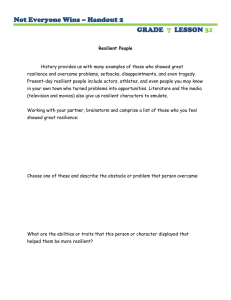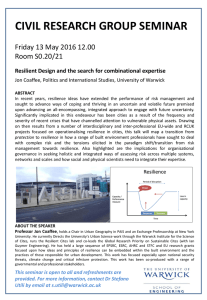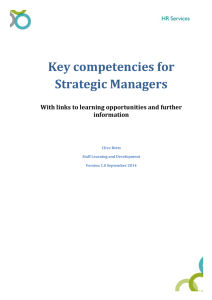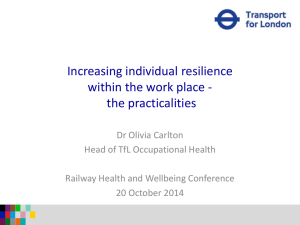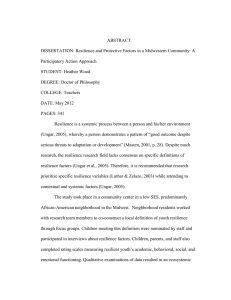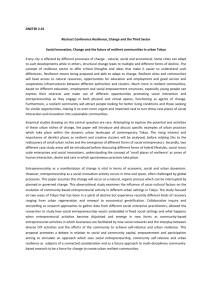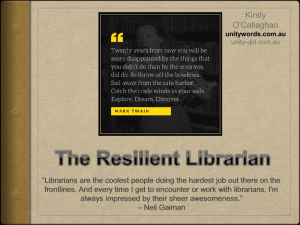Resilient cities - Outputs, themes, ideas, questions - Toby Kent
advertisement
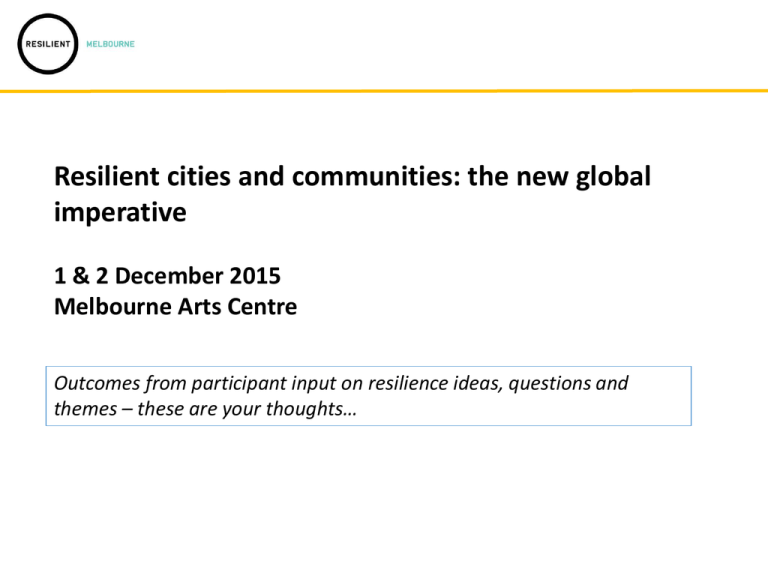
Resilient cities and communities: the new global imperative 1 & 2 December 2015 Melbourne Arts Centre Outcomes from participant input on resilience ideas, questions and themes – these are your thoughts… Key Thematic Areas 1. Community Engagement and Connection 2. Behavioral Transformation 3. Creative Communication 4. New Models of Governance 5. Economy and Innovative Finance 6. Green Infrastructure and Sustainable Development Community Engagement and Connection Ideas • Emergency service organisations, local governments and the community have an opportunity to collaborate and work more closely together. We need to develop new ways of working where the community leads what works for them. Further questions • How do we design and plan for a community if there is no community to consult with? (Greenfield development) • What do our citizens need from us to enable greater community cohesion? • How can local government change their leadership style to value the radical, positive, and self organising contributions of community? How can we get out of their way? • “Wisdom lies in the community” – how do we capture and engage the community and it’s wisdom? Behavioral Transformation Ideas • Look to New Zealand’s response plan – street and neighbourhood focus. • Initiation of behavioural transformation should not require a crisis. Further questions • How do we become better prepared for the uncertain, as well as the certain? • How can we prevent the word “resilient” being used in token or misleading ways? • What are the new capabilities needed (at the Executive and Officer level) to support resilient futures? Creative Communication Ideas • Community cohesion is key to resilience. Governments need to work with communities effectively and stay focused on the opportunities even when the media stirs up fear in the face of terrorist events. Further questions • What role do the media play in building resilience? • How do we bring the media to the table? They are very powerful in the agenda’s that are pushed / championed. New Models of Governance Ideas • Work on resilience needs to cut across policy silos such as infrastructure and social cohesion. We need to apply systems thinking. • We need to engage the broader local government organisations in Melbourne on the resilience journey. Further questions • To what extent does regulation stymie change and impede resilience? • At the conclusion of the seed funded 100RC program, the work has only just begun. What happens next? Who owns the outcomes and who will be responsible for keeping the program running? • If we generally know what to do….is it a lack of leadership that’s blocking us from getting on with it? Economy and Innovative Finance Ideas • Demonstrate community and local government collaboration – then fund collaborations as ‘shared responsibility’ • Develop grant streams and offer grants to fund collaborations with resilience outcomes Further questions • What role does free markets and clear price signals have in facilitating change and growing and empowering communities? • How do we fund long term community projects, to help people and communities build the future? Green Infrastructure and Sustainable Development Ideas • We need to have reverse marking for green field and tower development. If we inform people about the impact of their choice to purchase for their long term health, safety and wellbeing, maybe they would choose somewhere else. • “If we were serious, couldn’t we fix this (Melbourne unbalanced urban structure) with a concerted 30 year plan?” Further questions • Greenfield sprawl is happening. It will continue to happen. 30 year approvals are in place. How do we make them better? • Balancing the densification and the city. How do we balance the need to be “fiscally responsible” (which is a short term outcome) and the desire of communities to have a liveable / resilient city which can often be expensive, but has long term outcomes? • How to design infrastructure that works now, but doesn’t lock us into old ways that aren’t sustainable? • How to change the urban heat island effect?

